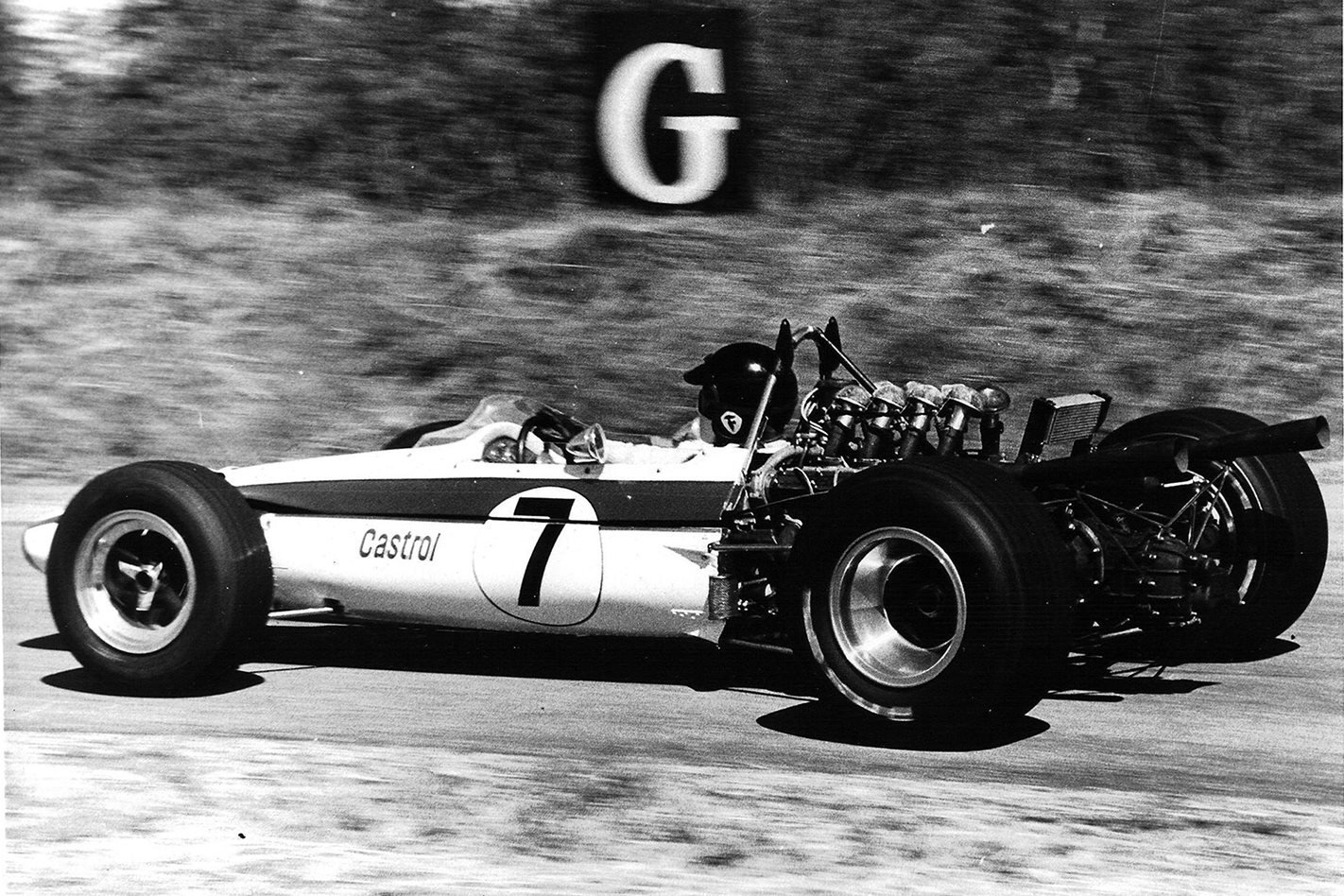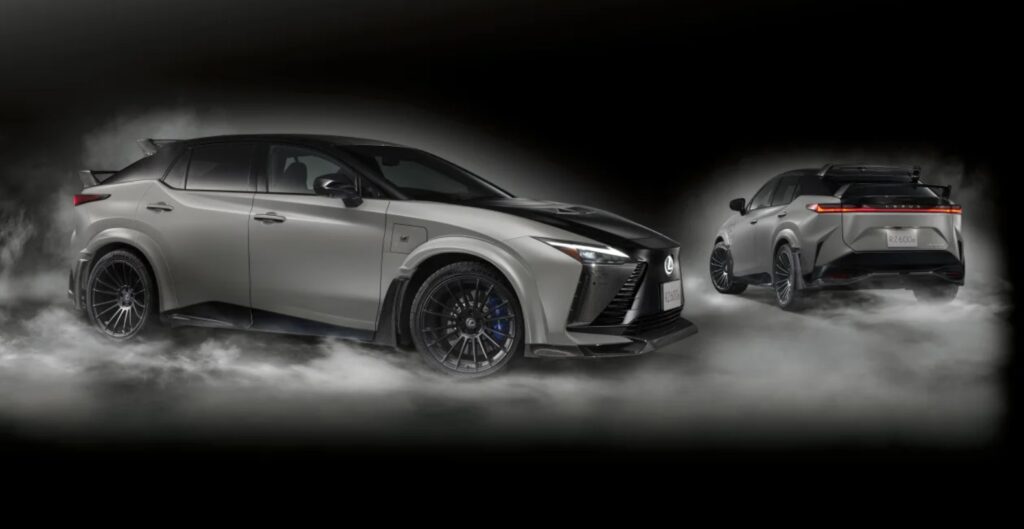LEO Geoghegan never attracted the mass adoration accorded others in Australian motor sport because his greatest triumphs were in formula cars and sports cars, rather than the touring cars that turned so many other drivers into track legends. And televised motor sport was in its infancy.
Geoghegan, who has passed away in Sydney aged 78 after losing his battle with bone cancer, will be remembered for his classical, elegant driving style and for being a gentleman with commendable sporting instincts.
While his younger brother Ian ‘Pete’ Geoghegan, who grew to become a rather large bloke, concentrated mainly on, and enjoyed much success in, sedans (winning five Australian touring car championships), Leo spent much of his racing career in open-wheelers and sports racing cars.
He was at the peak of his considerable powers when the Australian motor sporting scene was not dominated so obviously and brutally by tin-tops. Like many of his peers in the 1960s and 70s, Geoghegan jumped comfortably between open wheels and sports cars. And, later, to touring cars.
The Tasman Series was a huge summer Down Under hit that attracted leading Formula One stars. And Geoghegan was one of the few local heroes capable of rubbing wheels with drivers of the quality of Jim Clark, Graham Hill and Stirling Moss.
Geoghegan was a big admirer of Clark and liked to tell the story of how he coerced the two-times world champion into mowing his mum’s lawn.
When the internationals came for the Tasman Series race at Warwick Farm, the Geoghegan family traditionally hosted a barbecue at their nearby home. Leo’s mum was proud of her garden and on one occasion hassled Leo to come and mow the lawn. Jim Clark arrived at Leo’s workshop after a flying lesson and asked if there was anything he could do. Leo asked if he could mow a lawn, Jim obligingly agreed and was sent off to meet Mrs Geoghegan, introducing himself as: “I’m Jim, I’m here to mow the lawn”. At the function, Mrs Geoghegan was asked if she knew the young Scot. “Oh yes,” she replied, “it’s the man who mows the lawn.”
Kevin Bartlett, a long-time adversary, says Leo was “very intense though not like Allan Moffat, but focussed”.
“Leo would stand around and talk, and tell a joke,” recalls Bartlett. “But as soon as he sat in the car, the race face would come on. He’d lick his lips.”
Bartlett said Geoghegan had the benefit of some very good, well-prepared cars, “and he drove them bloody well; he was always a formidable competitor”.
In countless races together, Bartlett and Geoghegan clashed just once, at Warwick Farm, when they shared the front row and fought over the same piece of bitumen. “Leo came off second-best and wanted to remonstrate afterwards. He calmed down quickly.
“I always knew I was in for a hard time when Leo, Spencer [Martin], Harves [John Harvey] and then later Max [Stewart] were on the grid.
“But Leo would never grab a car by the scruff. He understood it never paid to drive a Lotus at 11/10ths.”
The Geoghegan brothers were born into a racing family. Father Tom ran taxis and had a car yard and service station in Liverpool, in Sydney’s south-west.
Tom raced cars as diverse as MG TC, humpy Holden and Jowett, and the boys were soon to follow, with their father instilling in them the need to prepare and present the racecars in a smart, professional way.
Leo began racing at 17, in Tom’s black Holden 48-215, quickly impressing fans and rivals.
In a Vintage Racecar interview with Patrick Quinn, Leo recalled his excitement when he first raced at Mount Panorama: “I drove at Bathurst for the first time in 1956 in the Holden. Bathurst was marvellous, all that I expected and more. I loved it! Loved the challenge. To cut a long story short, it was a handicap race and we started at the back but managed to win the event with Bob Holden not far behind in a Peugeot.”
In 1960, he switched to a Lotus Elite and won 21 races from 25 starts, including the 1960 Australian GT Championship.
Leo’s first real racing car, a Lotus 18 Formula Junior, followed in 1961, and then a Lotus 20, which won so many races that the Geoghegans became official Lotus agents.
A new Lotus 20 a year later led to more winning, starting immediately with victory and a lap record at Warwick Farm and again at Lakeside. Other race cars followed – often Lotuses but also a Daimler and Ford Cortina – and so did the wins. Australian titles, State titles and circuit records.
He shared a black Daimler SP250 with Ian to win the 1962 Bathurst Six Hour and six years later, in a Ferrari 250LM, the brothers raced off with the Surfers Paradise Six Hour.
As well as taking out the 1970 Gold Star for the Australian Drivers Championship and back-to-back Australian F2 championships in 1973-74, Geoghegan nailed the rare distinction for an Australian of winning an international grand prix, the Japanese Grand Prix in 1969 at Fuji Speedway, driving his ex-Jim Clark Lotus 39-Repco V8.
Leo’s versatility meant that each October from 1963 to 1973 (bar 1966) he raced in the annual Bathurst 500/1000 endurance race.
Leo and Ian shared their Ford Cortina GT500 in the 1965 Armstrong 500 while wearing business suits as part of a sponsorship deal with a Sydney clothing store. It was an unusual scenario for an introvert like Leo.
Leo’s best Bathurst finish was second in 1967 driving a factory Ford XR Falcon GT, again with brother Ian. The Geoghegans were the first to greet the chequered flag, but a protest by team-mate Harry Firth resulted in the brothers being relegated to second after a re-count of the lap charts.
The confusion came about two hours after the start when their Falcon ran out of petrol after it had passed the pits. Leo, who in the car at the time, was able to drive through the back gate into the pits to be refuelled, which led the lap scorers to mistakenly credit their car with a lap it did not complete. The race was then awarded to Firth and his co-driver Fred Gibson.
To the day he died, Leo Geoghegan insisted the lap scorers had it correct the first time and that he and Ian should be in the record books as the winners of the 1967 Bathurst 500.
When Chrysler became serious about upsetting the two-make battles between Holden and Ford, Leo was hired between 1970 and 1972 as development driver in the campaign to turn the Pacer and then the Charger into serious track weapons.
Chrysler never quite toppled its rivals at Mount Panorama, although it landed a podium in 1972.
In the mid-1980s, Geoghegan made a track comeback of sorts when he raced a Mitsubishi Starion turbo in the Winton 300 and major production car events.
In more recent years Leo Geoghegan was a happy and enthusiastic keeper of the Chrysler flame in Australia, in demand as a guest speaker at car clubs until ill-health intervened.
Commenting on his death, noted motor sports photographer and historian Paul Cross said: “Leo was an absolute gentleman, a great driver, fantastic company, always willing to give of his time, and never critical of his rivals – not even Harry Firth. He will be much missed.”
LEO GEOGHEGAN:
- Started racing at Mount Druitt, Bathurst and Gnoo Blas.
- NSW Touring Car Champion in 1956 (Holden), 1957 (Holden) and 1964 (Ford Cortina GT).
- Australian GT Champion 1960 (Lotus Elite).
- Won Queensland Tourist Trophy 1963 (Lotus 23).
- Australian Formula Junior Champion 1963 (Lotus 22).
- Won Surfers Paradise Six-Hour race 1968 (with Pete in Ferrari 250LM).
- Highest-placed Australian resident driver in AGP 1967-69.
- Won 1969 Japan Auto Federation Grand Prix (Lotus 39); Japanese referred to him as “Gigglesan”.
- Australian Gold Star Champion 1970 (Lotus 59 Waggott).
- Australian Formula 2 Champion 1973 (Birrana 273).
- Australian Formula 2 Champion 1974 (Birrana 274).
- Successfully drove Porsche 911 for Grace Bros Race Team 1973-74.
- Works driver for Ford at Bathurst 1963-65 and 1967-69.
- Works driver for Chrysler 1970-1972.
- Works driver for Holden Dealer Team at Bathurst 1973.
- Life Member of the Australian Racing Drivers Club.





